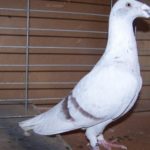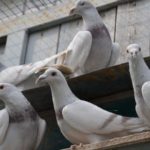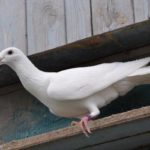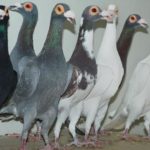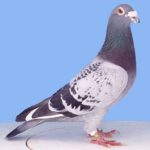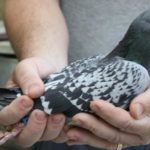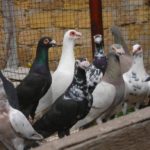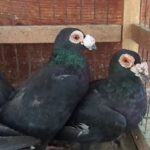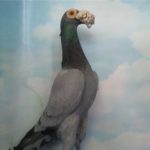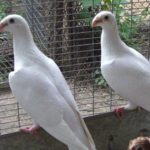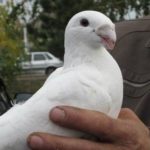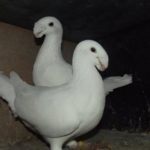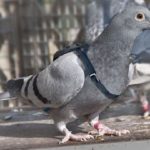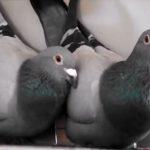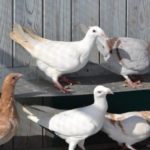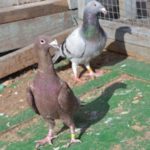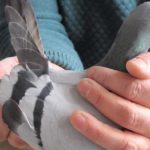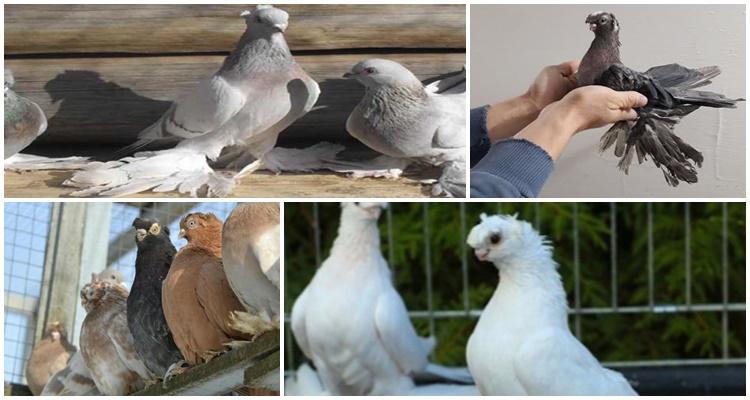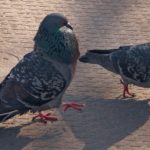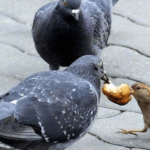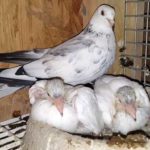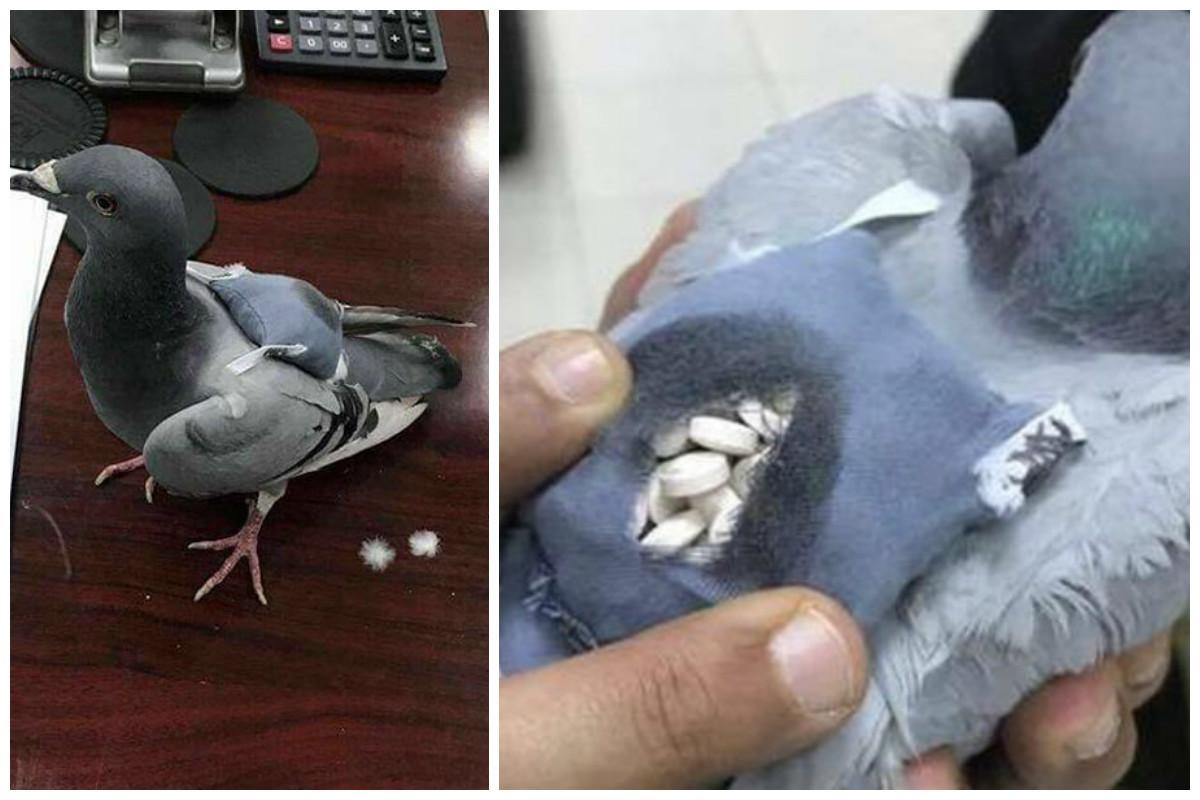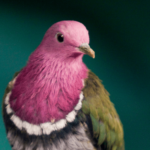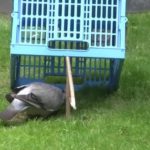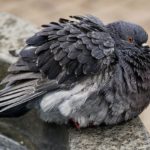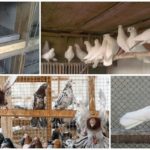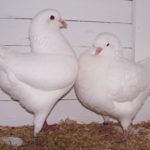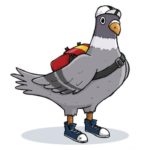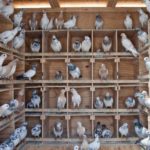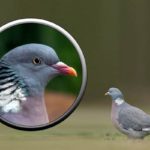Pigeon mail has long been used for fast and reliable transmission of messages over long distances. It was used by many peoples. Today, there is no need for birds to send letters, and therefore carrier pigeons are used only in sporting events. Let's consider a description of the breeds, advantages and disadvantages. How to keep, feed, breed and train pigeons.
Historical data on carrier pigeons
Pigeon mail operated in many countries for centuries and remained the fastest and most reliable. Pigeons were used not only to deliver private messages, notifications about the state of affairs on the securities market, but also military reports. For example, in France in 1870, birds were used to transmit secret messages in the war with the Germans. Modern homing pigeons are called sporting ones. They are hardy, have a special body structure, optimal size, and excellent speed qualities.
Famous breeds
Now there are several varieties of homing pigeons used in sports. The varieties differ in characteristics and plumage.
Czechs
Representatives of the breed have thick and smooth plumage and light color. The birds are folded correctly, the body is placed horizontally. Czechs have a small head, flattened on the sides, and a wide forehead. The neck is long, widened at the base. Long strong wings, narrow tail.
The breed's pigeons are easy to work with and are used by amateur and professional poultry farmers in competitions.
Belgian
Considered the standard for sporting breeds. The body is round in shape, developed chest, long neck. Pigeons have a rounded head and a short neck. The peculiarity of the breed is short feathers on the wings and tail. The color is not the same: brown, gray, reddish.
This is an old and well-known breed, bred back in the 19th century. Valued by pigeon breeders as a classic.
Dragons
Birds with a small, dense body. Short neck, small head. A distinctive feature is growths on the beak at the base and around the eyes. The ends of the wings reach the tail. The color of dragons is white and black, gray and motley.
German
The breed was obtained from the offspring of pigeons of English and Dutch breeds. The birds have a compact body, short beak and tail, and a long neck. The coloring is varied.
English
Obtained from Egyptian quarry rock. English pigeons have a large, high-set body and a relatively small head. Growths on the beak and near the eyes. The plumage is of different colors, hard.
Russian
The body and head are graceful, the beak is sharp, and the tips of the wings are curved. The feathers are white, less often variegated.
How does pigeon post work?
The use of pigeon mail is based on the ability of pigeons to return home wherever they are released. How they find their home has not yet been established exactly, but the birds do it unmistakably. They are capable of flying hundreds of kilometers without rest. The average flight speed is 70-100 km/h. At the same time, birds can carry a load weighing up to 75 g.
Diet of postal birds
For each homing pigeon there should be no more than 100 g of food; overfeeding leads to the fact that the birds begin to be lazy. Feed is given 3 times a day, at dawn, at one o'clock in the afternoon and before sunset. They feed heavily only during the molting period and in winter, when it is cold.
Pigeons are fed cereal grains (except oats and rye) and legumes, limiting the proportion of green peas. The birds' diet should contain sources of mineral elements - salt, calcium, and there should be fine sand in the house for proper digestion. Young animals need to be fed with animal products and vegetable oil so that the body develops and the feathers acquire beauty.
The water should be fresh, at room temperature. Pigeons can bathe in water, so in the summer they need to provide water containers for bathing. As with keeping pigeons of ordinary breeds, you need to follow the rules - remove droppings, ventilate the room, and disinfect it.
Features of training
The training begins when the pigeons reach 6 weeks of age and their feathers are fully formed. The training consists of taking the bird a short distance from the house and releasing it. She returns and everything repeats, but this time the distance is increased. This is how the pigeon gets used to what is required of it.
The optimal time for training is April-October, that is, the entire warm season.At first, you can only release it in good weather, as rain or intense wind can lead the bird astray. Then, when the pigeon gains experience, you can continue in unfavorable weather.
When the pigeons learn, every month they need to be released at the maximum distance so that they do not become lazy and fat. Pigeons that do not have a pair are not allowed to participate in training. It is believed that in the wild they can start looking for a partner and not return.
An hour before release, the pigeons are fed and watered. Birds must be released from an open place, located at least on a small hill. The duration of the flight is affected by the nature of the terrain. If it is open, without obstacles, the pigeon will reach the goal faster (even if the distance is long) than if it overcomes short, but mountainous or wooded terrain.
Rules for breeding and growing
When building a dovecote, you need to take into account that it should be located away from wires and communication systems in order to minimize risks for birds. The recommended height of the structure is 2 m, the bird population density is no more than 4 birds per 1 sq. m. m. In the poultry house it is necessary to maintain a constant temperature, moderate humidity, lighting at 14 o'clock. Proper care allows pigeons to grow and develop properly.
At six months, postal pigeons can be mated. 2 weeks after mating, the dove lays an egg, and a day later - a second one. Young females can lay only 1 egg. The date the first egg was laid should be recorded; this may be necessary if only one chick is hatched. Then you can put someone else's baby pigeon in the nest, if necessary. Hatching begins after 2 eggs are laid; both parents incubate the offspring alternately, but most of the time the female sits in the nest.
To get purebred chicks, you need to select only purebred parents. Select healthy, strong, young birds that have the best characteristics.
This way you can improve your livestock by carrying out breeding work on your farm and choosing the best of the best from your own pigeons.
Pros and cons of carrier pigeons
Raising homing pigeons is no more difficult than other breeds of pigeons. They eat the same things and require the same conditions. But they also need to be trained, otherwise they will lose the qualities for which they were bred.
Modern mail
In European countries and around the world, pigeons still continue to fulfill their duties. Birds are used in Switzerland, Cuba, and Holland. In Belgium, pigeons carry important information over short distances, and in England, trading exchanges use pigeon mail. Delivery by pigeon mail can be more profitable and faster than modern communication methods due to the congestion of highways.
However, pigeons, for obvious reasons, are used to a limited extent and mainly compete in competitions that are organized to identify the best representatives of the breeds. Postal breeds are bred by amateurs who value them not for their productive qualities, but for their strength, endurance, beautiful flight, and graceful build.
Homing pigeon breeds were developed a long time ago and are still popular. And not only as beautiful birds; The purpose of postal mail has not lost its relevance today.They are still used for their intended purpose, although much less frequently than in the past.

